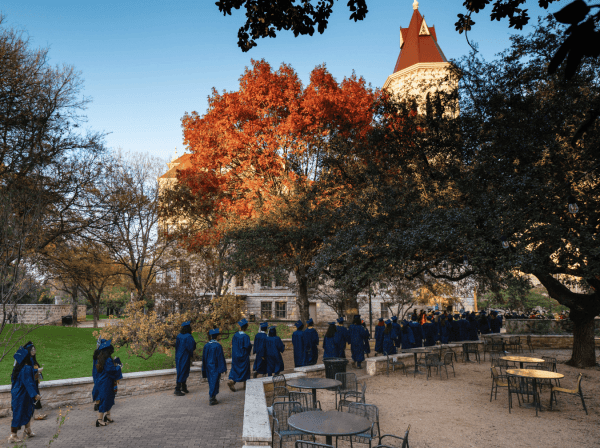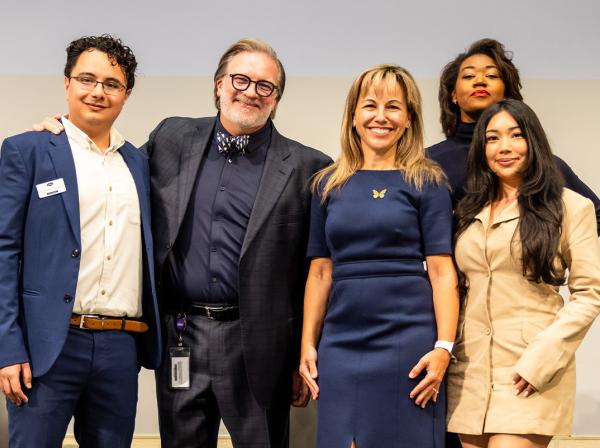St. Edward's University Receives $1.5 Million STEM Grant from the National Science Foundation
Austin, Texas — St. Edward’s University has received a five-year, $1.5 million grant from the National Science Foundation to establish the Institute for Interdisciplinary Science (I4), which will prepare students for careers in the 4th Industrial Revolution — this revolution is marked by advancements in robotics, artificial intelligence, 3D printing, biotechnology, autonomous vehicles and other emerging technologies.
This award, from NSF’s Improving Undergraduate STEM Education: Hispanic-Serving Institutions (HSI) Program, is aimed at increasing capacity to prepare more students to enter and be successful in STEM careers. This is also part of NSF’s larger effort to increase the number of minorities in the STEM workforce as African Americans, Native Americans and Hispanics are underrepresented across most STEM professions. Having qualified as an HSI for more than three decades, St. Edward’s serves 4,400 students, of which 41.4% are Hispanic. Minorities encompass 52.4% of the most recently enrolled class.
“This NSF grant will give the next generation of STEM employees — our students — even greater opportunities for internships and research across disciplines,” said Andrew Prall, provost of St. Edward’s University. “The Institute for Interdisciplinary Science will bring together various disciplines and develop a set of best practices that we hope will one day be leveraged at other Hispanic-Serving Institutions.”
Biological Sciences Professor Andrea Holgado, the grant’s principal investigator, and co-principal investigators Charles Hauser, associate professor of Bioinformatics, Laura J. Baker, professor of Computer Science, Raychelle Burks, assistant professor of Chemistry, and Paul Walter, assistant professor of Physics, form the leadership team for this endeavor.
The Institute for Interdisciplinary Science will use its NSF funding to meet the needs of the 4th Industrial Revolution in terms of student workforce training, cross-sector cooperation, and interdisciplinary opportunities for faculty and students. Whereas the 3rd Industrial Revolution ushered in the Internet, the 4th Revolution is often associated with the Internet of Things, in which information flows rapidly and technology enables devices’ connectivity.
“The technologies of the 4th Industrial Revolution require interdisciplinary teams to problem solve,” Holgado said. “We need to work outside our discipline boundaries and form cohesive teams where physicists, mathematicians, engineers, biologists, chemists and computer scientists cooperate in resolving large-scale problems such as sustainable energy or human overpopulation and food-water scarcity.”
Holgado said that part of the NSF funding will go toward providing paid internships to students at St. Edward’s. I4 plans to grow the St. Edward’s internship program through establishing new partnerships with industry and nonprofit organizations in Austin and beyond.
I4 will also provide scholarship money for students who seek certification in nanotechnology or other emerging technologies. One of the credentialing programs will be run by I4’s partner NASCENT (Nanosystems Engineering Research Center) at The University of Texas at Austin, which offers a certification in nanotechnology tools.
Another goal of the institute is to catalyze faculty advancement, interdisciplinary collaborations and innovative research.
“Investment in faculty in the form of professional development grants and research opportunities awards will impact everyone: faculty, students and industry and other cross-sector partners,” Holgado said.
Ultimately, Holgado said that I4 will develop a set of best practices that will allow the university to scale up and open the program to students outside of St. Edward’s or a consortium of schools.


